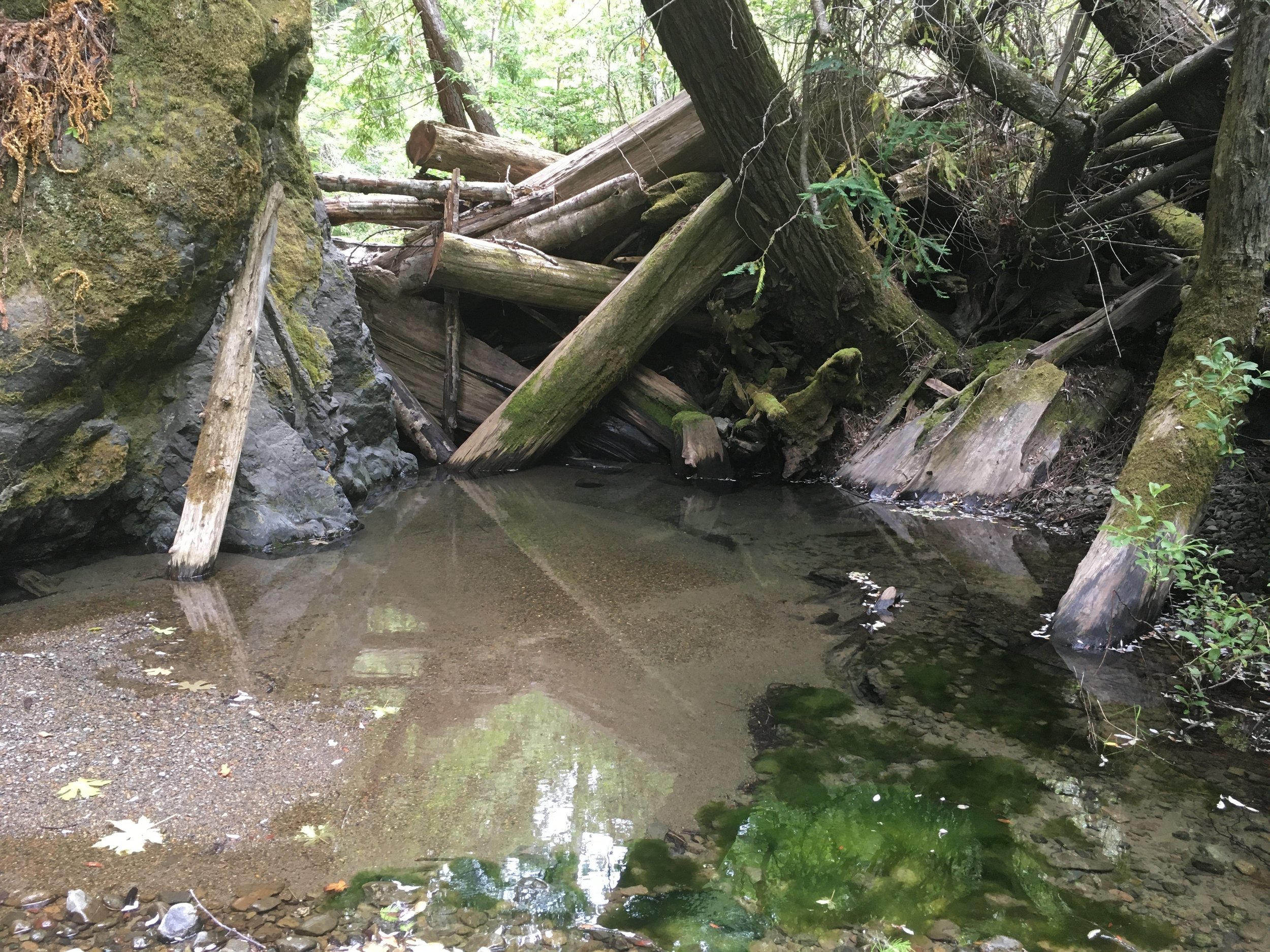Restoring Fish Habitat at Jenner Headlands Preserve
California’s salmon, steelhead, and other species are vitally dependent on the ecological integrity of dozens of streams and rivers that flow into the Pacific Ocean along the state’s coastline. Over the years, the construction of roads, bridges, and other structures has created permanent barriers to fish movement, resulting in habitat fragmentation and a vast reduction of available habitat for spawning and rearing.
Barriers to fish passage can have profoundly harmful effects on coastal watersheds and the species that live there, including population decline. Recognizing the importance of saving and restoring the populations of salmon and steelhead, The Wildlands Conservancy has worked to improve water quality and restore fish passage through barrier removal at Jenner Headlands Preserve.
Jenner Headlands Preserve encompasses much of the East Branch of Russian Gulch and a portion of its watershed. The Russian Gulch supports current populations of Northern California steelhead and historic populations of Central California Coast coho salmon in its Main Stem and lower reaches of its tributaries, including the East Branch. Legacy logging practices within the Russian Gulch watershed created channel wide log jams in certain locations creating passage barriers for migratory fish.
Working in tandem with California Department of Fish & Wildlife (CDFW), California State Coastal Conservancy, the Wildlife Conservation Board, and other fishery biologists, Wildlands embarked on a three-year fish passage enhancement project. After multiple stream inventories initiated by CDFW, Wildlands conducted modifications and the removal of legacy logging debris jams along the East Branch of Russian Gulch in 2019. That same year, Wildlands conducted a two-day fish rescue and relocation project where 30 California giant salamanders — a species of special concern to California — and 49 steelhead were safely relocated to a suitable habitat as well as several yellow-legged frogs and countless caddisfly larvae. This was followed by two years of extensive monitoring and reporting, with findings showing an overall improvement to fish passage conditions and water quality along the East Branch.
Central to the mission of The Wildlands Conservancy is to imparadise the Earth — healing human impacts to both the beauty of the land and its rich biodiversity. In doing so, we are dedicated to rewilding species which is why conserving and improving riparian habitat conditions at the Preserve will remain an ongoing effort. Our Jenner Headlands Preserve staff continues to survey the entire length of the East Branch Russian Gulch on a routine basis, assessing new fish passage barriers and monitoring water quality to aid in the recovery of California’s salmon and steelhead populations.




